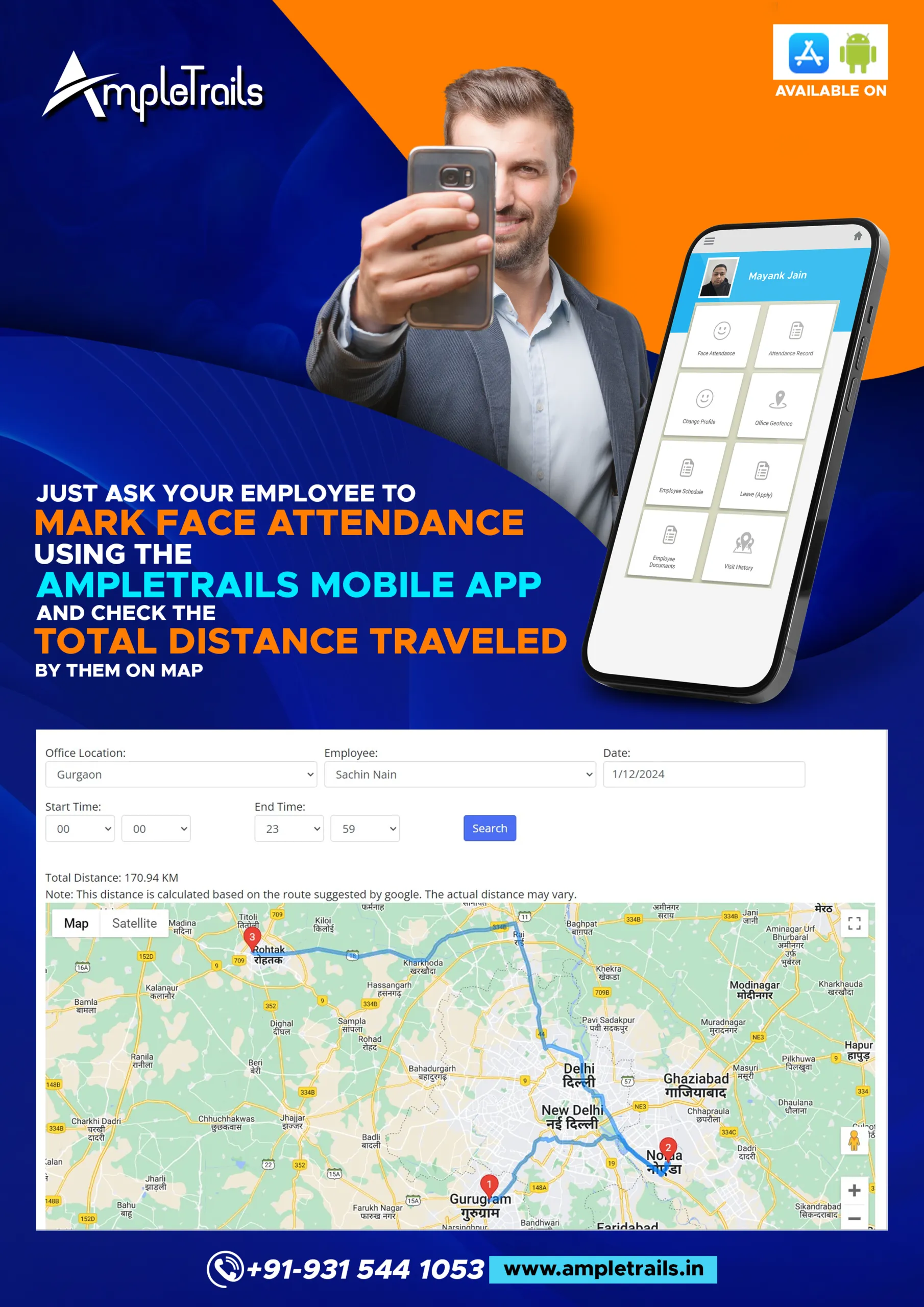Simplifying Attendance Management with Face Recognition App
Organizations are continually seeking efficient solutions for attendance management. A significant advancement in this area is the attendance app with face recognition. This technology is beneficial because it streamlines the attendance process, enhancing both accuracy and efficiency.
Ease of Use and Security
The face recognition feature in attendance apps is user-friendly and secure. It’s beneficial because employees can mark their attendance quickly and effortlessly, while employers get the assurance of accurate identity verification.
Tracking Distance Travelled
Another advantage is the app’s ability to calculate the total distance traveled by employees. This is particularly useful for organizations with mobile workforces because it provides insights into travel patterns and helps in managing logistics efficiently.
Contact Us for More Information
Enhance Your Workforce Management with Face Recognition Attendance App
In the dynamic world of business operations, managing employee attendance efficiently is crucial. The advent of mobile attendance applications with face recognition technology is revolutionizing this aspect of business. These applications provide a seamless, accurate, and secure way to manage attendance, making them an essential tool for modern organizations.
The Power of Face Recognition in Attendance Management
Face recognition technology in attendance systems offers numerous benefits. The primary advantage is the enhancement of security – it ensures that the attendance marked is by the actual employee, not an imposter. This technology is also beneficial because it reduces the time taken to mark attendance, allowing employees to quickly start their workday.
Real-Time Tracking and Distance Calculation using Attendance App with Face Recognition
One of the innovative features of these apps is the ability to track the real-time location and calculate the distance traveled by the employees. This functionality is particularly beneficial for businesses with field staff because it provides insights into their workday movement, aiding in efficient workforce management and resource allocation.
How the App Calculates Distance Traveled Attendance App with Face Recognition
The application calculates the distance traveled by continuously capturing geolocation data (latitude and longitude) as you move. This data is then used to plot your journey on a map. The distance between these points is calculated using complex algorithms that consider the Earth’s curvature and the possible routes taken.
Each segment between two points is measured, and the sum of these segments provides the total distance traveled. The app’s accuracy in calculating distance depends on the frequency and precision of the geolocation data it receives.
Seamless Integration and User-Friendly Experience
These mobile attendance systems are designed for ease of use and can be seamlessly integrated into your existing HR management ecosystem. The user-friendly interface ensures that employees can mark their attendance without any hassle, and the management can access the attendance data easily for analysis and reporting purposes.
Adopting a Mobile-First Approach
In today’s mobile-first world, adopting a system that employees can access from their smartphones is a step forward. It not only simplifies the process but also aligns with the tech-savvy nature of the modern workforce. Moreover, it facilitates remote working models, which are becoming increasingly popular.
Customization and Scalability
Another advantage of these systems is their customization and scalability. They can be tailored to meet the specific needs of your business, whether it’s a small startup or a large corporation. As your business grows, the system can scale up to accommodate more users and complex requirements.
Integration with Third-Party Systems
This system is designed for flexible integration with various third-party software, including HRMS and SAP systems. The integration can be achieved through multiple methods:
- SQL Database: Data can be exported to an SQL table, facilitating easy access and manipulation within the database environment.
- FTP: The system can transfer data files over FTP (File Transfer Protocol), allowing for seamless data sharing between different platforms.
- API: Integration via Application Programming Interface (API) enables real-time data communication and control between the system and external applications.
These integration capabilities ensure that the system can adapt to various operational needs, enhancing data flow and system interoperability.




